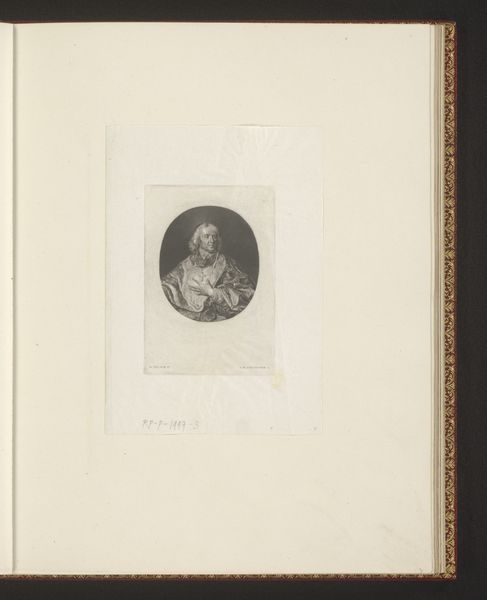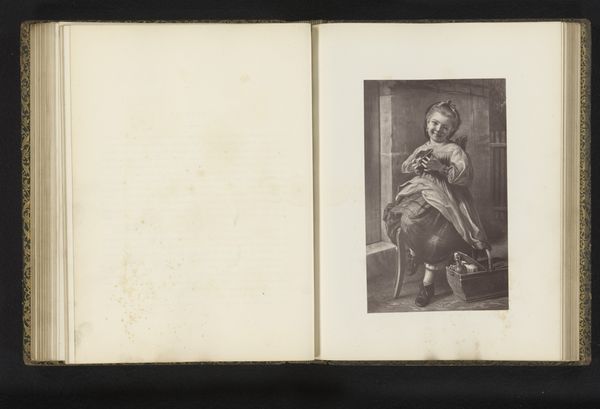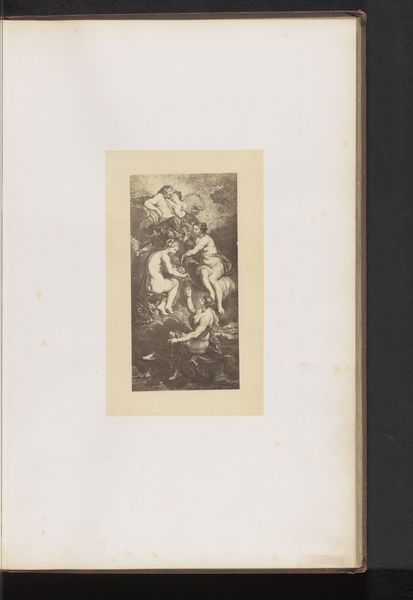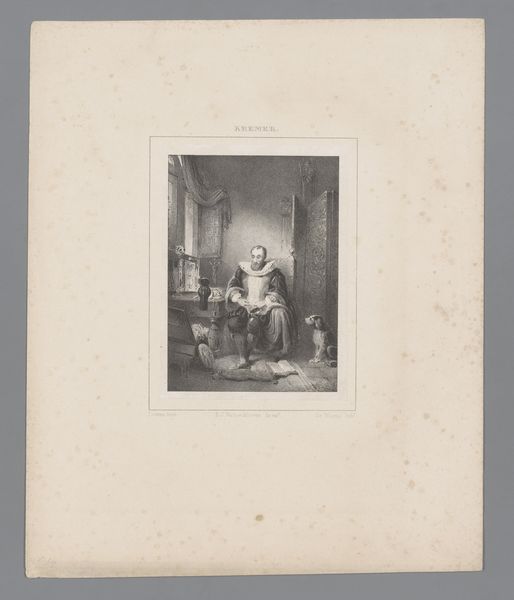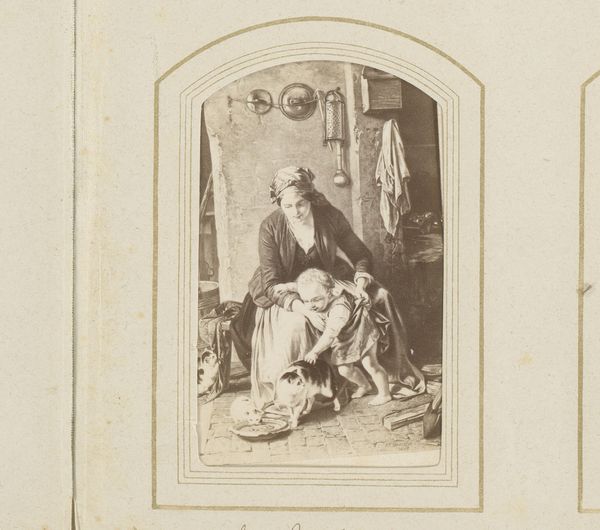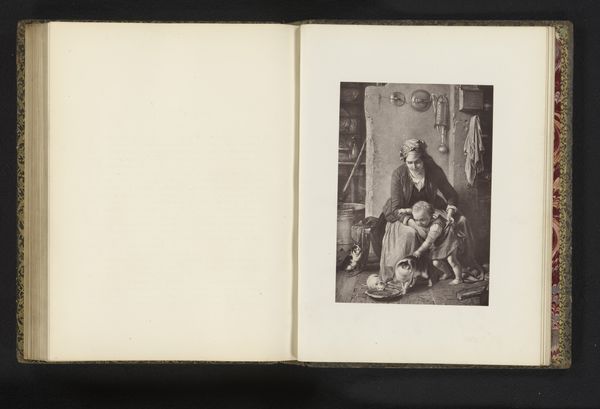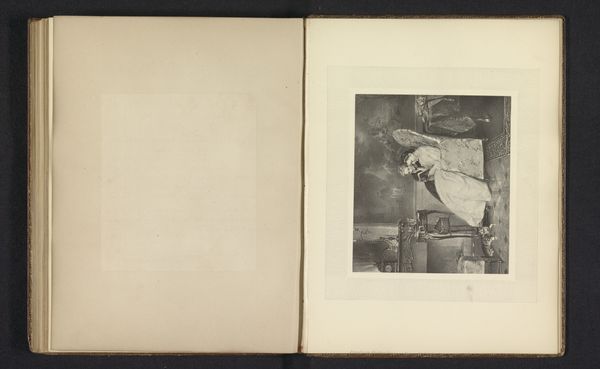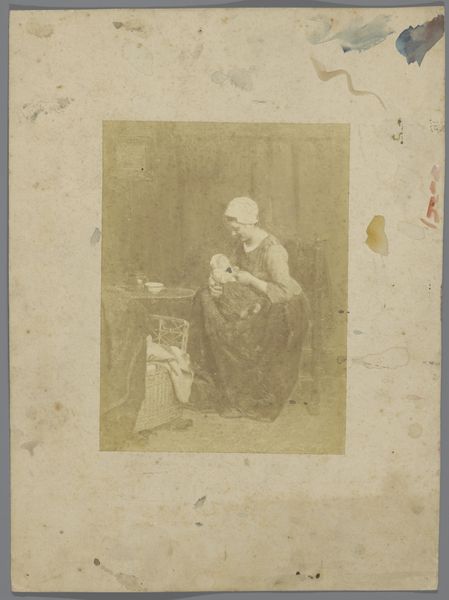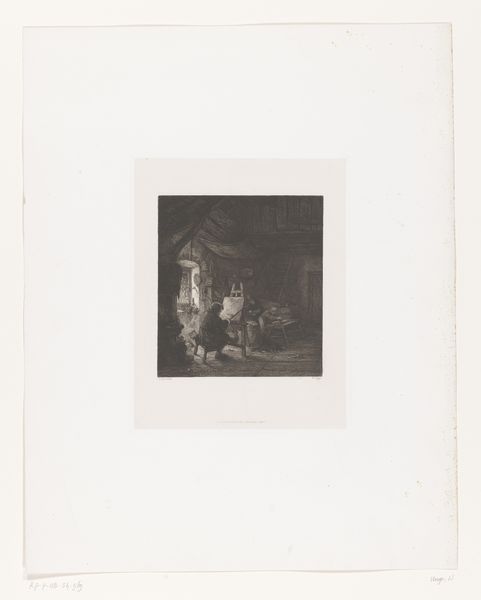
Fotoreproductie van een gravure van een portret van Francesco I de'Medici door Jean-Marc Nattier, naar het schilderij door Peter Paul Rubens before 1864
0:00
0:00
dechampsetcie
Rijksmuseum
Dimensions: height 199 mm, width 150 mm
Copyright: Rijks Museum: Open Domain
Editor: This is a photogravure of Francesco I de'Medici. It’s based on a painting by Rubens but engraved by Jean-Marc Nattier. This particular print is from before 1864 and is currently held at the Rijksmuseum. I find it fascinating how this image travels across time through different artistic hands. What symbols or cultural touchstones stand out to you? Curator: Notice how strategically the symbols function here. The figure's attire—the fur, the jeweled cross, even the walking stick—assert power and nobility, reflecting both earthly authority and divine right. This image is not just a portrait but a statement. Editor: I see it! Like a visual language proclaiming status. What about the background elements, such as the curtain? Curator: The curtain is very interesting! Drapery, traditionally associated with theater, invites us, the viewers, into a performance of power. In this portrait, the Medici family sought to connect with ancient lineage and contemporary significance. Editor: It’s almost like he is not a man, but a stage. Curator: Exactly! So much about these Renaissance and Baroque portraits is about cultivating the legacy through symbolic cues, the family’s role within society, and an invitation to its audiences to uphold their vision. Editor: So, it’s less about capturing the man himself and more about constructing a persona. Curator: Indeed. The symbols aren't arbitrary but carefully selected to convey layers of meaning accessible to a cultured audience. It shows how symbolism helps us access the emotional intent that motivated it in the first place. Editor: Fascinating! Thank you, this helped me connect the figure with larger ideas of performance and lineage.
Comments
No comments
Be the first to comment and join the conversation on the ultimate creative platform.

